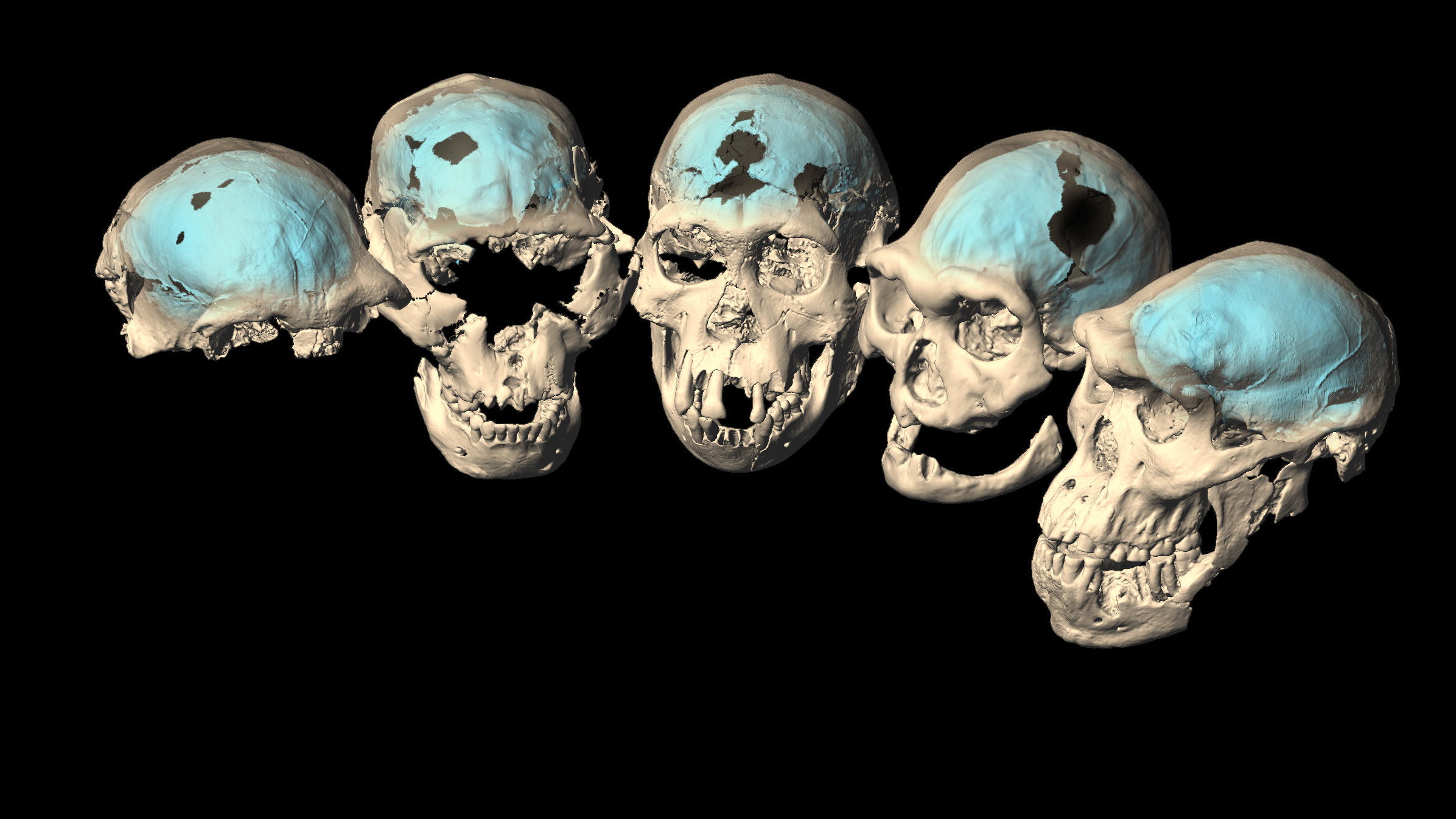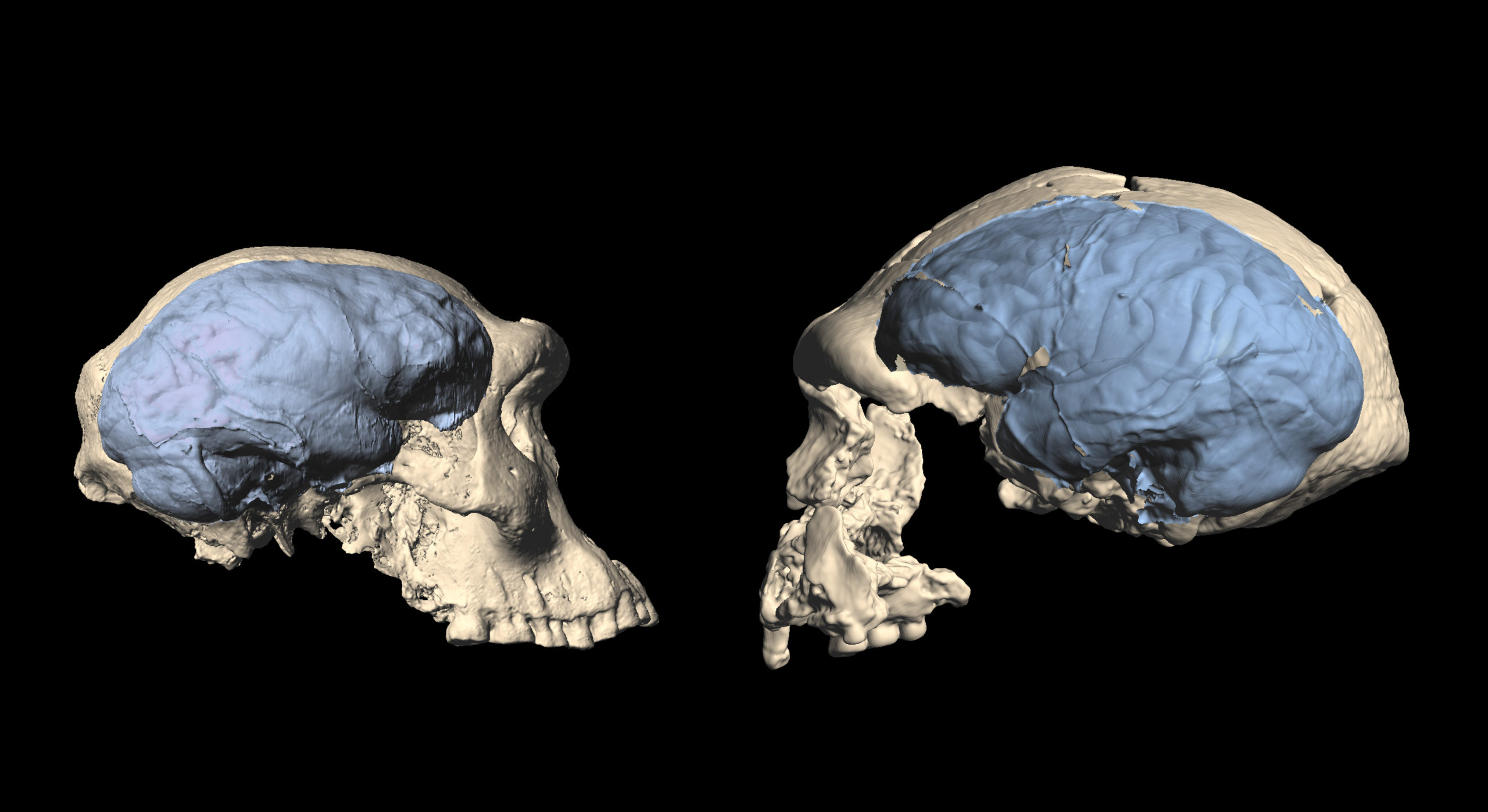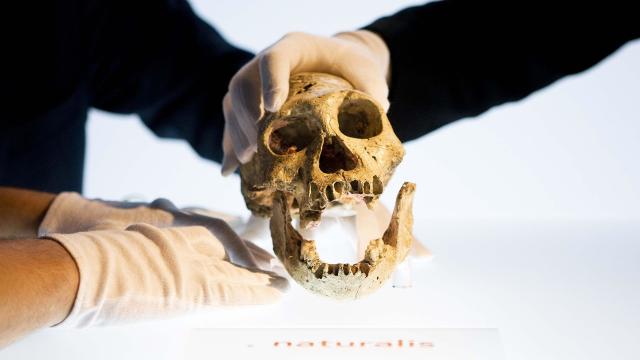Humans can be distinguished from other apes in many ways, such as our general hairlessness, our upright bipedalism, and, of course, our powerful brains. But it turns out that our cognitive ability didn’t evolve as early as previously thought, according to new research by an international team of researchers.
The team’s findings, published today in the journal Science, are based on five 1.8-million-year-old skulls from a roughly 4 hectare site near the Georgian town of Dmanisi. The brains of these early arrivals into Europe and Asia — hominin species that evolved well before Homo sapiens — were already known to be small, but in the recent inspection, the researchers made endocasts of the ancient skulls. Basically, they created topographical maps of the brain cases, which can reveal minute differences in shape that provide insights about the development of different regions of the long-decomposed brains. Understanding ancient brain structures helps flesh out the genesis of our species; whether we inched or sprinted to our modern morphology and what road we took to get here.

“These structures are extremely interesting, because they constitute the neural substrate for complex cognitive tasks, such as toolmaking and use, social cognition, and, most importantly, spoken language,” said study authors Marcia Ponce de León and Christoph Zollikofer, both paleoanthropologists at the University of Zurich, in an email. “We don’t know whether these hominins had language in the modern sense, but the brain structures were there, and likely have co-evolved with language capabilities.”
The saga of human origins is clouded by a fragmentary fossil record, like an old book so worn with time that only a few handfuls of sentences are being used to guess the whole story. But guess we do, and our accuracy gets better with every newly found fossil and newly invented technology to analyse them. The skulls investigated in the new paper were excavated between 1991 and 2008 and are housed at the Georgian National Museum in Tbilisi.
Comparing the Georgian Homo endocasts to ones taken from skulls of about the same age and younger from Africa and the Indonesian island of Java, the team found that the Georgian hominins’ brains looked more similar to those of great apes than modern humans. This suggests that modern brain structures emerged from Africa later than early wanderers out of the continent by at least 100,000 years.
“There must have been two ‘out-of-Africa’ dispersals of early Homo: the first is documented by the fossil evidence from the site of Dmanisi in today’s Georgia” about 2 million years ago, the researchers said in their email. “These Homo populations had primitive brains. The second dispersal is documented by the fossils from Java; these populations had modern brains.”

Since the earliest fossil attributed to the genus Homo dates to nearly 3 million years ago, the Georgian skulls signify that at least some of the earliest humans lacked the developed brains we normally think of as defining our genus. It was a moment, the researchers said, of “realising the emperor had no clothes,” the clothes here being a reorganized brain.
The researchers were particularly interested in the frontal lobes of the Dmanisi individuals, a region of the brain that likely played a vital role in the early human endeavours of language development and toolmaking. Both innovations were springboards for early humans, who were able to do more than survive; at some point, we began to communicate with nuance, organise as larger groups, and created tools that allowed us to hunt more effectively, live in greater comfort, and eventually become the most dominant species on the planet (for better or worse).
“It does not really change our understanding of Homo sapiens, but it definitely changes the way we look at early human brain evolution,” said Amélie Beaudet, a paleoanthropologist at the University of Cambridge who was not affiliated with the recent study, in an email. Beaudet noted that despite knowledge of the primitive Australopithecine brain structure possessed by the Lucy individual, among others, and the more-developed crania of recent humans (dating to about half a million years ago), “we did not really know what happened in between. With this study we have a better idea, even if there are still some gaps.”
More fossils always help in better understanding our evolutionary arc, but in lieu of new finds, new technology tends to step up. The gap in our knowledge of human cognitive development is narrowing. We should be grateful for our predecessors’ evolution, because now we have the brains to figure out how it all happened.
